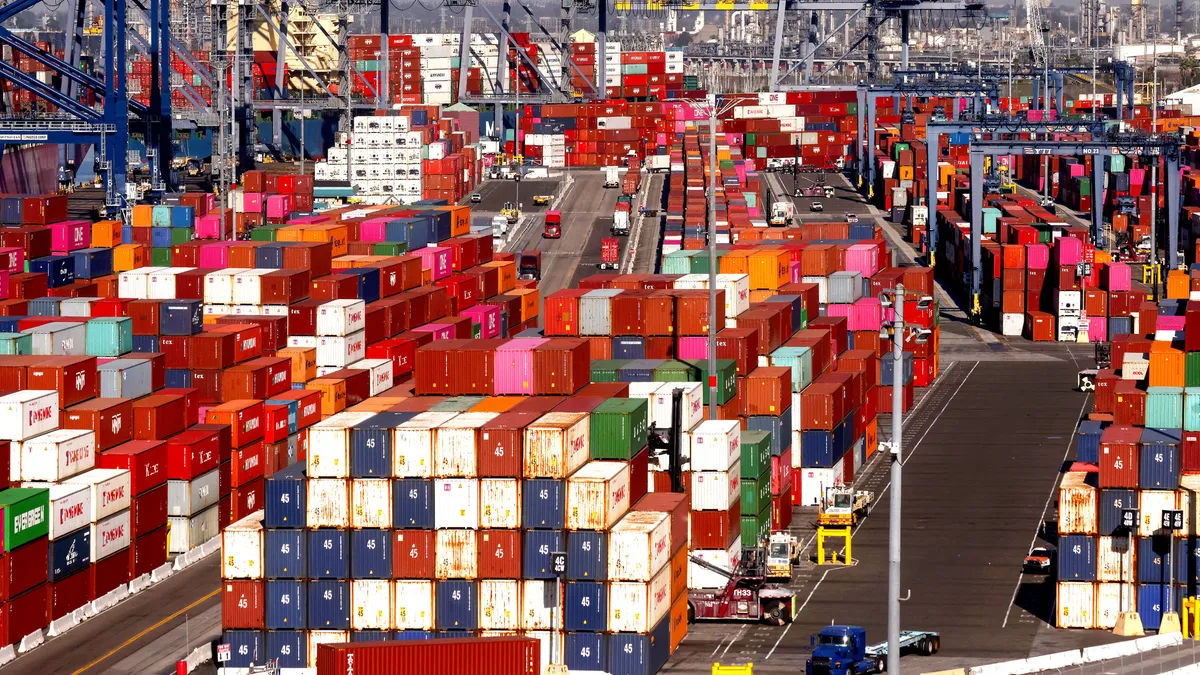LOS ANGELES — The Port of Los Angeles handled nearly 877,000 TEUs of containers last month, eclipsing 2021 as the busiest June in the port’s history, as retailers continued to replenish store and warehouse inventories, Executive Director Gene Seroka said last week.
Despite 9.1% consumer inflation and growing concerns about a potential recession, “for the month of June, Americans are still spending on goods,” Seroka said during his monthly briefing. The June cargo numbers are 15% higher than the port’s previous five-year June average, Seroka said.
“Though the latest Commerce Department data indicated an easing of consumer purchases in the month of May, we'll continue to monitor this and other key data, such as the results of the Amazon Prime days, GDP numbers and the June retail sales, all to see if this is a true trend,” he said.
With imports and exports down slightly from June 2021, the port’s cargo growth was due to a surge in empty containers. Empties increased 8% YoY to 338,041 TEUs, he said. “We’ll continue to see these heightened levels of empties repositioned as imports remain strong from Asia,” Seroka said.
The nation’s busiest seaport saw imports slide 5% from last June to 444,680 TEUs, but they remained 12% higher than the port’s five-year June average, the port director said.
The port handled 93,890 TEUs of exports in June, a 2% drop YoY. Exports have dropped 39 out of the last 44 months.
A topic of frustration for the port since the spring, rail congestion has exacerbated the port’s problem of long-dwelling containers.
“All eyes are focused on improving our rail products — full stop,” Seroka said.
More than 29,000 aging rail containers are sitting on its docks. “That number should be more in the 9,000 unit range,” Seroka said. Dwell times for those containers, which should be roughly two days, are currently at about seven-and-a-half days.
“We've been talking about this since March and now need to act,” Seroka said. “Everyone has a role to play in the solution.”
He called on shippers to pick up their boxes faster at inland rail terminals, a source of many of the railroads’ congestion problems. The western railroads need to provide more crews, engine, power and rail cars to West Coast ports, Seroka said, and ports and marine terminals need to provide data to help prioritize movement of aging containers.
“Bottom line: we must take action on this issue immediately to avoid a nationwide logjam,” Seroka said.
About 5.4 million TEUs of cargo have crossed the Los Angeles piers since January, “keeping pace box-for-box with last year’s record clip,” Seroka said. Reflecting on the first six months of the year, Seroka said the port “hit the mark on an early Lunar New Year” on Feb. 1, handling inventory replenishment and reducing waiting vessels by 75%.
Peak season inventory orders are on the way for back to school, fall fashion, Halloween and the end-of-year holidays, Seroka said, but he acknowledged that imports could continue to lag compared to record 2021 volumes.
“Even though some retailers have high inventories and may look to discount goods, I expect imports to remain strong though tapered versus last year,” Seroka said.















